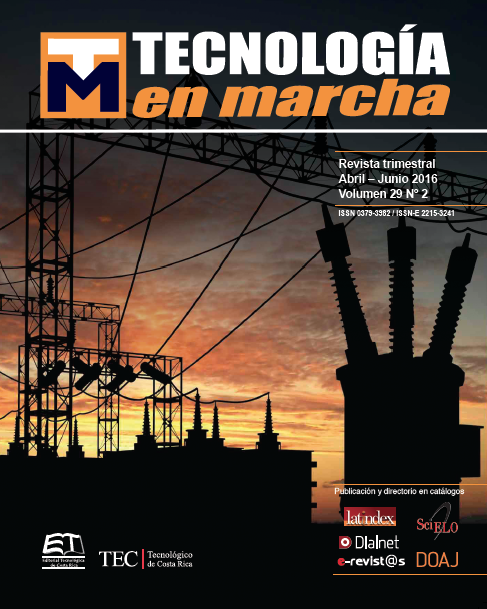Excreta disposal coverage in Costa Rica from 2000 to 2014 and outlook for 2021
Main Article Content
Abstract
The present study aimed to establish excreta disposal coverage and progress in Costa Rica from 2000 to 2014, considering the different mechanisms for excreta evacuation (e.g. drainage, septic tank, and latrine), and assessing the removal of the Biochemical Oxygen Demand (BOD mg/L) and faecal coliforms (CF/100 mL) within conventional wastewater treatment systems managed by AyA. Likewise, the study aimed to assess the excreta disposal coverage expectations for 2021.
Six steps were followed: 1) diseases linked to excreta transmission were analysed; 2) the concept of ‘Improved sanitation facilities’ established by the UNICEF and the WHO was defined; 3) the excreta disposal coverage was described according to the use of drainage, septic tanks, and latrines, in a centralise and decentralise level, and in urban or rural area during 2014; 4) a stock of wastewater conventional treatment systems were carried out together with the efficiency of BOD and faecal coliforms removal in wastewater and treated water controlled by the National Water Laboratory (LNA) in 2014; 5) an assessment of the progress of excreta disposal coverage along the different mechanisms for evacuation was carried out during the period 2000-2014; and 6) the expectations of excreta disposal by septic tanks or drainage were established for 2021.
A summary was writing up concerning the factors linked to infectious disease transmission to humans by excreta contact. Subsequently, the concept of ‘Improved sanitation facilities’ established by the UNICEF and the WHO was defined. Based on the data development of the population with excreta disposal coverage in 2014, the study confirmed that 71,5 % of the costarican population possesses septic tanks, 26,6 % drainage, 1,5 % latrines, and 0,4 % lacks of any excreta evacuation mechanism. The stock presented 56 wastewater conventional treatment systems. Efficiency of BOD (mg/L) and coliforms faecal (CF/100 mL) removal were determined; none of the waste stabilization ponds complied with the maximum limit value (50 mg/L). Only 57 % of the 14 activated sludge treatment systems complied with the BOD allowed value established on the national normative in 2010. Coliform faecal removal percentages were high (90 % - 100 %); although, increased density of microorganisms can cause high risk of water sources pollution. The analysis of the progress of the different excreta disposal mechanisms during 2000-2014 showed a rise in the use of septic tanks, during 2000-2011. In 2012 a low reversion was observed, and in 2014 the use of septic tank was reduced to 71,5 %.
Finally, an analysis of the enlargement of the drainage and water treatment within 11 municipalities in San José will allow to reach 22 – 25 % of the population with treated excreta disposal, and 50 – 53 % in the use of drainage. This will allow the reduction of the use of septic tanks to 50 % for 2021.
Article Details
Los autores conservan los derechos de autor y ceden a la revista el derecho de la primera publicación y pueda editarlo, reproducirlo, distribuirlo, exhibirlo y comunicarlo en el país y en el extranjero mediante medios impresos y electrónicos. Asimismo, asumen el compromiso sobre cualquier litigio o reclamación relacionada con derechos de propiedad intelectual, exonerando de responsabilidad a la Editorial Tecnológica de Costa Rica. Además, se establece que los autores pueden realizar otros acuerdos contractuales independientes y adicionales para la distribución no exclusiva de la versión del artículo publicado en esta revista (p. ej., incluirlo en un repositorio institucional o publicarlo en un libro) siempre que indiquen claramente que el trabajo se publicó por primera vez en esta revista.

